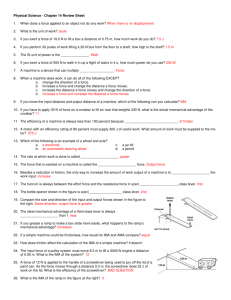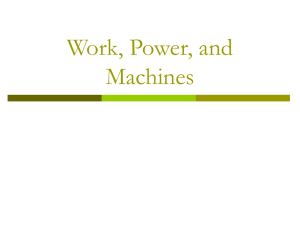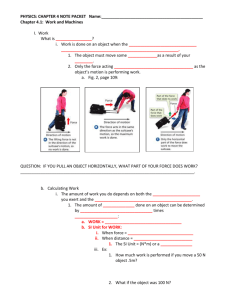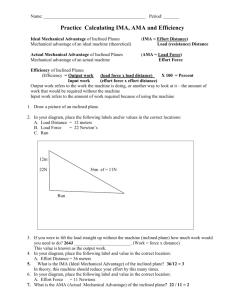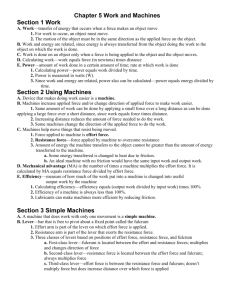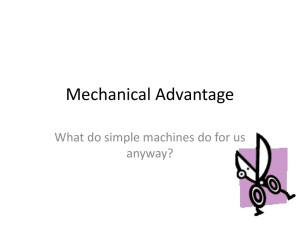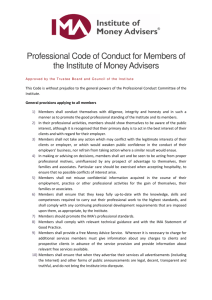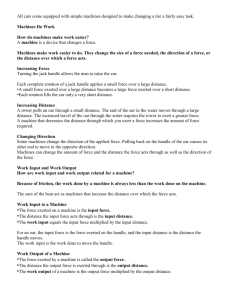CP PHYSICS - Brookwood High School
advertisement
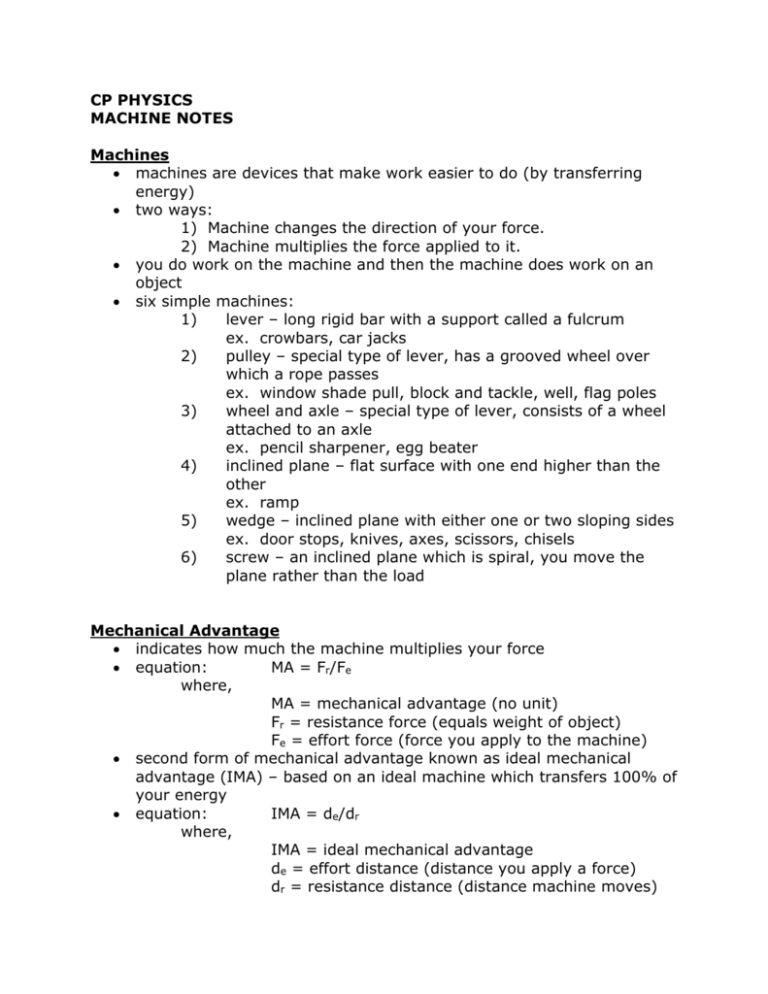
CP PHYSICS MACHINE NOTES Machines machines are devices that make work easier to do (by transferring energy) two ways: 1) Machine changes the direction of your force. 2) Machine multiplies the force applied to it. you do work on the machine and then the machine does work on an object six simple machines: 1) lever – long rigid bar with a support called a fulcrum ex. crowbars, car jacks 2) pulley – special type of lever, has a grooved wheel over which a rope passes ex. window shade pull, block and tackle, well, flag poles 3) wheel and axle – special type of lever, consists of a wheel attached to an axle ex. pencil sharpener, egg beater 4) inclined plane – flat surface with one end higher than the other ex. ramp 5) wedge – inclined plane with either one or two sloping sides ex. door stops, knives, axes, scissors, chisels 6) screw – an inclined plane which is spiral, you move the plane rather than the load Mechanical Advantage indicates how much the machine multiplies your force equation: MA = Fr/Fe where, MA = mechanical advantage (no unit) Fr = resistance force (equals weight of object) Fe = effort force (force you apply to the machine) second form of mechanical advantage known as ideal mechanical advantage (IMA) – based on an ideal machine which transfers 100% of your energy equation: IMA = de/dr where, IMA = ideal mechanical advantage de = effort distance (distance you apply a force) dr = resistance distance (distance machine moves) CP PHYSICS, MACHINE NOTES, page 2 Efficiency shows how much of the work you put into the machine (input work) is actually used to do work on the object by the machine (output work) equation: Efficiency = Wo/Wi x 100% where, Wo = output work(J) Wi = input work (J) machines cannot multiply your work or energy—they can only multiply force, In other words – a machine cannot do more work than the work you put into it Example Calculations 1. What is the mechanical advantage of a pulley system in which you apply a force of 58 N to lift an object whose weight is 194 N? Fe = 58 N Fr = 194 N MA = ? 2. What is the mechanical advantage of a ramp that is used to raise a sofa whose mass is 155 kg if the person applies a force of 273 N to push the sofa up the ramp? Fe = 273 N Fr = 155 kg x 9.8 = 1519 N MA = ? 3. MA = Fr/Fe = 1519/273 MA = 5.56 What is the ideal mechanical advantage of a ramp that is 1.8 m high and has a length of 6.0 m? de = 6.0 m dr = 1.8 m IMA = ? 4. MA = Fr/Fe = 194/58 MA = 3.34 IMA = de/dr = 6.0/1.8 IMA = 3.33 What is the efficiency of a machine that provides an output work of 1125 J, if you put 1380 J of work into the machine? Wo = 1125 J Wi = 1380 J Efficiency = ? Efficiency = Wo/Wi x 100% = 1125/1380 x 100% Efficiency = 82%
